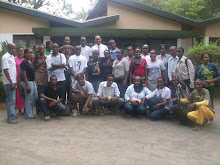Effects of climate change act as a threat mainly to the population that still depends on subsistence agriculture for their daily livelihood. The past trend on droughts, floods and recent poor harvest in recent years which resulted into hunger in most parts of the country, and disappearance of the ice cap at Mt. Kilimanjaro is now more than ever imminent evidence of climate change due to evident temperature increases caused by global warming.
Glacier retreat and change of vegetation on the slopes of Mt. Kilimanjaro have made the latter one of the climate change hotspots in Tanzania. In the past dense forests around the mountain used to cause water flows in a number of rivers that originate from the mountain eventually forming the large Pangani River Basin comprising Nyumba ya Mungu, Hale and Pangani Hydropower Stations.
The livelihood of surrounding communities depend on the ecosystem over the mountain, reliable water, forests products, rain-fed and irrigatable agriculture as well as livestock manifested the paradise of Mt. Kilimajaro ecosystem.
Recently, water shortage, failing agriculture, depletion of forest stocks and unreliability of rainfall has been experience and in view of persistence of this negative feature it has been attributed to climate change.
The negative effects of climate change have been worsen by increasing population pressure and poverty, agricultural land has been inadequate and communities have encroached the formally catchment forest area and river valleys for agricultural purposes. Other courses being the current land tenure system, where family heads distribute the available land as an asset to sons, and allocation of the catchment areas and river valleys as farming land. This increase pressure from human settlement and resource use caused the need for intervention becomes inevitable.
In order to address this issue there are must be promotion of reforestation programmes to adopt climate change impacts. This will involve restoration of vegetation cover on the degraded areas and making available forest products to communities living in the area.
In order to improve the livelihood of communities around Mt Kilimanjaro there are must be establishment of projects that will provide alternative sources of income and food through replanting of trees and economic diversification
There are must be efforts that will increase awareness on climate change adaptation, biodiversity conservation and aforestation through community participatory efforts which will strengthen community participatory through CBO’s, schools, churches, youth groups, women groups in conservation activities.
Written by Magreth U. Makinge
Subscribe to:
Post Comments (Atom)

No comments:
Post a Comment